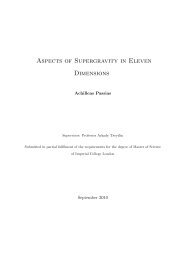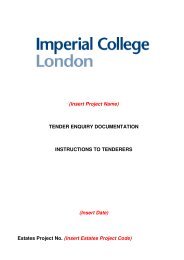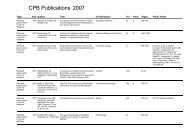lecture890708 - Workspace
lecture890708 - Workspace
lecture890708 - Workspace
Create successful ePaper yourself
Turn your PDF publications into a flip-book with our unique Google optimized e-Paper software.
Terpene Cyclases – Control of Cyclisation<br />
• Functional aspects of terpenoid cyclases:<br />
– Templating: Active site provides a template for a specific conformation of the flexible linear isoprenoid starting<br />
material.<br />
– Triggering: Cyclase initiates carbocation formation.<br />
• Metal-assisted leaving group departure (e.g. pyrophosphate ionization aided by Mg 2+ )<br />
• C=C bond protonation (e.g. squalene-hopene cyclase, see later).<br />
• Epoxide protonation (e.g. oxidosqualene cyclase, see later).<br />
– Chaperoning: Chaperones conformations of carbocationic intermediates through the reaction sequence,<br />
ordinarily leading to one specific product.<br />
– Sequestering: Sequesters the carbocation intermediates by burying the substrate in a hydrophobic cavity that is<br />
generally solvent-inaccessible. Carbocations are concomitantly stabilized by the presence of aromatic residues in<br />
the active site that exert their effects via cation-π interactions<br />
RECALL:<br />
δ<br />
= δ<br />
δ<br />
δ on edges<br />
δ on faces<br />
– Adapted from: Christianson et al. Curr. Opin. Struct. Biol. 1998, 695 (DOI)<br />
• BUT:<br />
– individual terpene cyclases can give multiple products, see: Matsuda J. Am. Chem. Soc. 2007, 129, 11213 (DOI)<br />
R<br />
R<br />
R<br />
Enz<br />
cation - π<br />
stabilisation<br />
(~40-80 kJmol -1 )
















